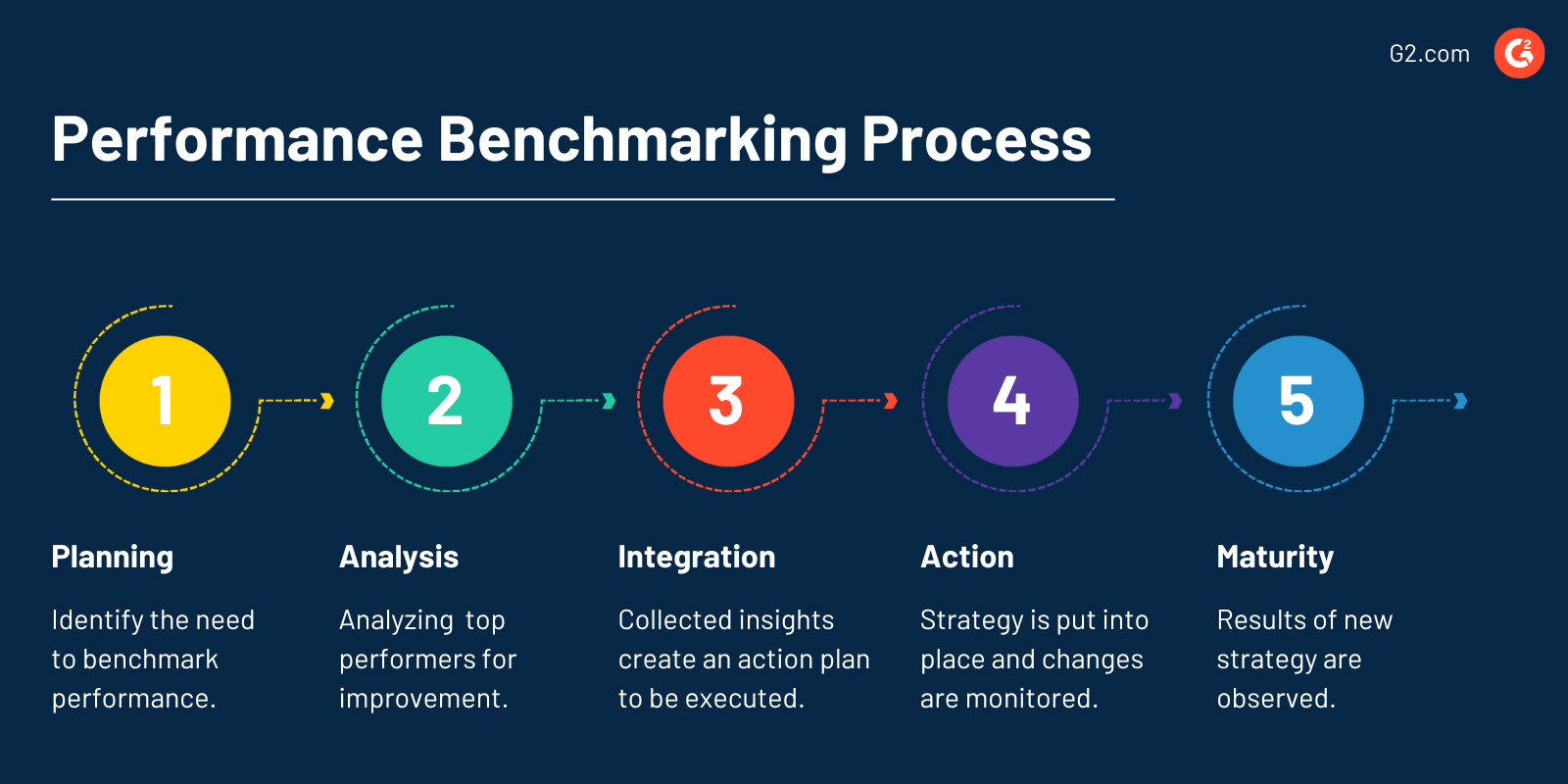What is performance benchmarking?
Performance benchmarking is the process of measuring and analyzing an organization’s performance of products, services, operations, and other business processes against other companies, competitors, or industry leaders. It helps businesses identify and understand areas for improvement.
This process helps companies benchmark and measure several metrics such as time-to-market, cost-per-unit, net promoter score (NPS), and customer retention. Performance benchmarking provides insights into how other brands compare to one, even if their audience or industry differs.
Many businesses use corporate performance management (CPM) software to monitor their business activities’ performance. It helps them track key performance indicators (KPIs) and strategize their operations to achieve business objectives. Performance benchmarking allows them to see how their business pans out against competitors or best-in-class industry standards.
Overall, performance benchmarking allows businesses to:
- Analyze past performance
- Compare their operations against industry standards
- Improve processes, products, and services to increase customer satisfaction, build loyalty, and promote retention
Types of performance benchmarking
Companies use multiple forms of benchmarking to stay competitive.
Strategic benchmarking
Strategic benchmarking involves comparing performance with the top performer. This analysis isn’t limited to competitors and specific industries but any business that has mastered a particular process or operation.
Strategic benchmarking doesn’t suggest quick changes but helps a business improve its strategies. It encourages businesses to consider core competencies and new product development for long-term improvement.
Competitive benchmarking
Competitive benchmarking helps businesses identify industry performance standards by evaluating competitors' processes and operations. It compares products, services, and methods that allow leaders to understand where they are in the current market and what they need to improve.
Both strategic and competitive benchmarking are types of external benchmarking processes. Below are a few other external benchmarking examples to help businesses learn and improve.
- Collaborative benchmarking: Companies collaborate with industry associations for comparative analysis.
- Process benchmarking: Businesses study their competitors’ processes, methods, and operations to identify improvement opportunities.
- Product benchmarking: Organizations compare their offerings with other products on the market. It includes evaluating features and attributes.
- Corporate benchmarking: Companies compare the functioning and performance of various departments such as manufacturing, employee success, marketing, and others with their competitors.
Internal benchmarking
Internal benchmarking enables companies to assess and compare their performance metrics over a period. This helps decide the steps to enhance business performance, effectiveness, and efficiency. Internal benchmarking is relatively easier since a company has access to its own data, allowing a business to enhance and modify its processes.
On the other hand, internal benchmarking limits how businesses can improve their performance because they spend more time evaluating their processes rather than learning from the top performers.
Businesses perform various types of internal performance benchmarking, including:
- SWOT Analysis. Businesses list their strengths, weaknesses, opportunities, and threats (SWOT) to analyze and gain insight into where and how to improve. Many companies use strategic planning software to perform these analyses.
- Financial benchmarking. Companies compare financial performance against forecast to take corrective action and further improve their financial operations.
- Performance metrics. Organizations evaluate their performance based on metrics preferred by clients, helping them identify performance gaps.
Performance benchmarking process
Performance benchmarking is a five-step process that provides a long-term solution to a problem or ways to adapt and manage improvements.

- Planning: Performance managers identify the need to benchmark performance at this stage and list competitors, processes, products, or services to analyze.
- Analysis: Next, they start analyzing their competitors or top-performers to find areas for improvement. It helps them understand their competitors’ strengths and weaknesses and align their strategies accordingly.
- Integration: Analysts report these insights to the senior leadership team with an action plan. The action plan and new strategies are executed once the management approves them.
- Action: Performance managers implement and execute the revamped strategy and monitor performance changes.
- Maturity: They observe new results from the revamped strategy. These results are likely to be better when performance benchmarking is done appropriately.
Benefits of performance benchmarking
Performance benchmarking offers several benefits to an organization, including:
- Learnings: Comparative analysis helps businesses understand best practices for a fruitful learning experience.
- Upgrades: Encourages companies to adopt new technologies to help them optimize their performance. Many businesses upgrade their tech stack to remain competitive in the market.
- Standardization: Helps companies set a standard operating procedure, product specifications, and service quality. This is competitive and scalable as businesses grow.
- Efficiency: Standardizing new processes improves employee efficiency, boosts performance, and helps reduce errors.
- Customer satisfaction: Enhances customer experience based on research surveys, customer feedback, and more. This improves customer satisfaction and promotes brand loyalty.
Performance benchmarking best practices
Businesses can adopt the following best practices to gain actionable insights from the benchmarking process:
- Make an early start. Businesses should identify improvement opportunities earlier.
- Fix a timeline. Companies can set a performance benchmarking scope to ensure analysts timely finish all research activities.
- Choose a relevant study group. Analysts should consider the business model, location, size, and product category while selecting a company for comparative analysis.
- Look outside the industry. Performance benchmarking teams can brainstorm with experts from other industries dealing with similar problems.
- Improve operations. Businesses should focus on improving the processes, operations, and strategies that drive business KPIs.

Sagar Joshi
Sagar Joshi is a former content marketing specialist at G2 in India. He is an engineer with a keen interest in data analytics and cybersecurity. He writes about topics related to them. You can find him reading books, learning a new language, or playing pool in his free time.







